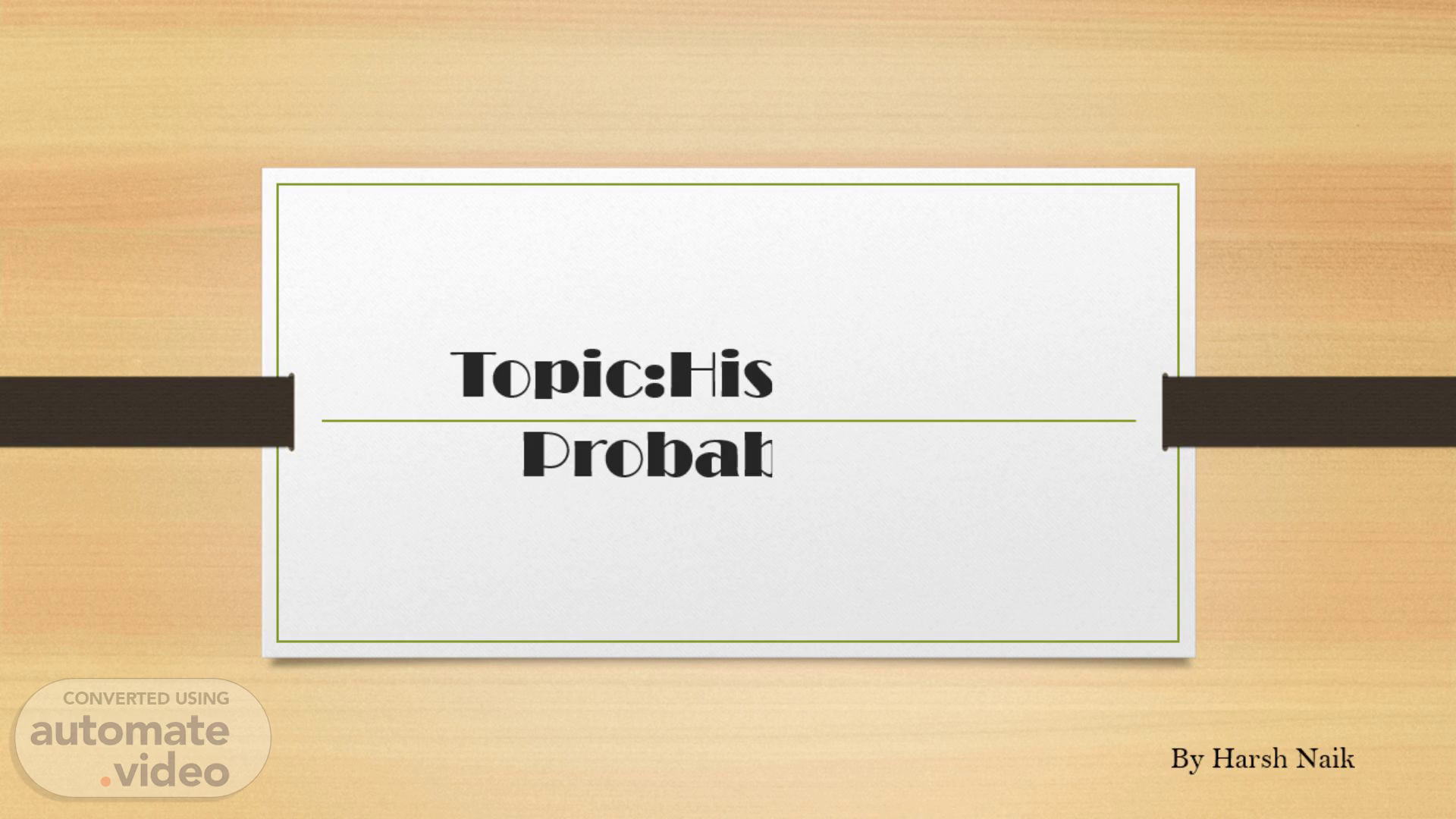
Topic:History of Probability
Scene 2 (14s)
Ancient Origins (Before 5th Century BC). Statistics traces its origins back to ancient civilizations, where data was collected for taxation, census, and trade. The Babylonians recorded data on land use and crop yields, essential for managing resources and taxation. Ancient Egyptians meticulously documented population figures, food production, and river levels, enabling effective resource allocation. The Chinese used data to track astronomical events and develop calendars, impacting agriculture and society..
Scene 3 (39s)
Probability Theory (17th Century). The 17th century marked a turning point with the work of Blaise Pascal and Pierre de Fermat, who introduced the concept of probability. Probability theory was initially developed to analyze games of chance, but its applications quickly expanded. This era laid the foundation for statistical inference, hypothesis testing, and decision-making under uncertainty. Probability theory became a fundamental component of statistics, essential for modeling and risk assessment..
Scene 4 (1m 9s)
Birth of Modern Statistics (18th Century). The 18th century saw the emergence of modern statistics with the contributions of Carl Friedrich Gauss. Gauss developed the normal distribution, which describes many natural phenomena, leading to the concept of the bell curve. Gauss also introduced the method of least squares, used for estimating parameters and fitting models to data. Modern statistical tools began to take shape, with an emphasis on data analysis, inference, and measurement..
Scene 5 (1m 33s)
Statistical Societies (19th Century). In the 19th century, statistical societies were founded, promoting the use of statistics and collaboration among statisticians. The Royal Statistical Society (RSS) was established in the United Kingdom in 1834, playing a pivotal role in advancing statistical knowledge. Statisticians began developing standardized methods for data collection, presentation, and analysis. The 19th century marked the beginning of systematic national censuses and surveys, which provided valuable data for research..
Scene 6 (1m 56s)
Statistical Methods in Social Sciences (20th Century).
Scene 7 (2m 21s)
Computational Statistics (Late 20th Century). The late 20th century saw the integration of computers into statistical analysis, giving rise to computational statistics. Computing power enabled the handling of larger datasets, complex simulations, and sophisticated mathematical models. Statistical software packages like SAS, SPSS, and later R and Python made data analysis more accessible to researchers and analysts. Data visualization tools and techniques improved the communication of results, making statistics more transparent and impactful..
Scene 8 (2m 43s)
Data Revolution (21st Century). The 21st century has witnessed an unprecedented data revolution, with the proliferation of big data. The internet, IoT devices, and social media have generated vast amounts of data, creating new challenges and opportunities for statisticians. Data science emerged as an interdisciplinary field, combining statistics, computer science, and domain expertise. Machine learning, AI, and predictive modeling have become integral to extracting insights from data..
Scene 9 (3m 5s)
Modern Statistical Tools. In the modern era, statisticians use advanced tools, including machine learning algorithms, artificial intelligence, and deep learning. Bayesian statistics and non-parametric methods provide flexible and powerful approaches for modeling complex data. Statistical techniques are essential for decision-making in industries like finance, healthcare, marketing, and more. Ethical considerations and data privacy have become critical issues in the era of big data, requiring statisticians to address new challenges..
Scene 10 (3m 30s)
Conclusion. The history of statistics reflects its evolution from ancient record-keeping to the forefront of data science. Statistics continues to play a pivotal role in understanding the world and making informed decisions. The field is dynamic, constantly evolving to meet the challenges posed by modern data and technology. The importance of statistical literacy and expertise is more significant than ever in our data-driven world..
Scene 11 (3m 49s)
THANK YOU.